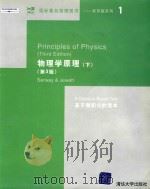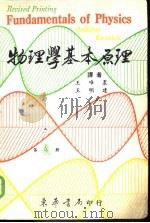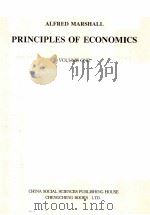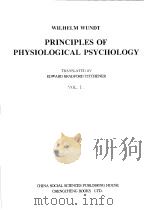《物理学原理 下 英文本》
| 作者 | Serway,Jewett著 编者 |
|---|---|
| 出版 | 北京:清华大学出版社 |
| 参考页数 | 1290 |
| 出版时间 | 没有确切时间的资料 目录预览 |
| ISBN号 | 7302076359 — 求助条款 |
| PDF编号 | 817607108(仅供预览,未存储实际文件) |
| 求助格式 | 扫描PDF(若分多册发行,每次仅能受理1册) |

VOLUME 11
An Invitation to Physics1
1Introduction and Vectors5
1.1 Standards of Length,Mass,and Time5
1.2 Density and Atomic Mass9
1.3 Dimensional Analysis10
1.4 Conversion of Units11
1.5 Order-of-Magnitude Calculations12
1.6 Significant Figures13
1.7 Coordinate Systems15
1.8 Vectors and Scalars16
1.9 Some Properties of Vectors18
1.10 Components of a Vector and Unit Vectors20
1.11 Modeling,Alternative Representations,and Problem-Solving Strategy25
Summary30
Context 1 Mission to Mars38
2Motion in One Dimension40
2.1 Average Velocity41
2.2 Instantaneous Velocity44
2.3 Analysis Models—The Particle Under Constant Velocity49
2.4 Acceleration51
2.5 Motion Diagrams54
2.6 The Particle Under Constant Acceleration56
2.7 Freely Falling Objects60
2.8 Context Connection—Liftoff Acceleration65
Summary66
3Motion in Two Dimensions75
3.1 The Position,Velocity,and Acceleration Vectors75
3.2 Two-Dimensional Motion with Constant Acceleration78
3.3 Projectile Motion80
3.4 The Particle in Uniform Circular Motion87
3.5 Tangential and Radial Acceleration90
3.6 Relative Velocity91
3.7 Context Connection—Circular Orbits94
Summary96
4 The Laws of Motion106
4.1The Concept of Force106
4.2 Newton’s First Law108
4.3 Inertial Mass110
4.4 Newton’s Second Law—The Particle under a Net Force111
4.5 The Gravitational Force and Weight114
4.6 Newton’s Third Law116
4.7 Applications of Newton’s Laws119
4.8 Context Connection—Controlling the Spacecraft in Empty Space127
Summary129
5More Applications of Newton’s Laws139
5.1 Forces of Friction139
5.2 Newton’s Second Law Applied to a Particle in Uniform Circular Motion147
5.3 Nonuniform Circular Motion154
5.4 Motion in the Presence of Velocity-Dependent Resistive Forces156
5.5 Numerical Representations of Particle Dynamics159
5.6 The Fundamental Forces of Nature162
5.7 The Gravitational Field165
5.8 Context Connection—The Effect of Gravity on Our Spacecraft166
Summary167
6Energy and Energy Transfer177
6.1 Systems and Environments178
6.2 Work Done by a Constant Force178
6.3 The Scalar Product of Two Vectors182
6.4 Work Done by a Varying Force184
6.5 Kinetic Energy and the Work-Kinetic Energy Theorem188
6.6 The Nonisolated System191
6.7 Situations Involving Kinetic Friction196
6.8 Power198
6.9 Context Connection—A Probe to the Sun200
Summary202
7Potential Energy210
7.1 Potential Energy of a System210
7.2 The Isolated System212
7.3 Conservative and Nonconservative Forces217
7.4 Conservative Forces and Potential Energy223
7.5 The Nonisolated System in Steady State224
7.6 Potential Energy for Gravitational and Electric Forces226
7.7 Energy Diagrams and Stability of Equilibrium229
7.8 Context Connection—Escape Speed from the Sun231
Summary232
8Momentum and Collisions243
8.1 Linear Momentum and Its Conservation243
8.2 Impulse and Momentum248
8.3 Collisions251
8.4 Two-Dimensional Collisions257
8.5 The Center of Mass260
8.6 Motion of a System of Particles264
8.7 Context Connection—Rocket Propulsion267
Summary269
9Relativity279
9.1 The Principle of Newtonian Relativity280
9.2 The Michelson-Morley Experiment282
9.3 Einstein’s Principle of Relativity283
9.4 Consequences of Special Relativity284
9.5 The Lorentz Transformation Equations293
9.6 Relativistic Momentum and the Relativistic Form of Newton’s Laws296
9.7 Relativistic Energy297
9.8 Mass and Energy300
9.9 General Relativity301
9.10 Context Connection—From Mars to the Stars304
Summary305
10Rotational Motion312
10.1 Angular Speed and Angular Acceleration313
10.2 Rotational Kinematics—The Rigid Body Under Constant Angular Acceleration317
10.3 Relations Between Rotational and Translational Quantities319
10.4 Rotational Kinetic Energy321
10.5 Torque and the Vector Product325
10.6 The Rigid Body in Equilibrium329
10.7 The Rigid Body Under a Net Torque332
10.8 Angular Momentum337
10.9 Conservation of Angular Momentum340
10.10 Precessional Motion of Gyroscopes343
10.11 Rolling of Rigid Bodies344
10.12 Context Connection—Gyroscopes in Space347
Summary349
11Gravity,Planetary Orbits,and the Hydrogen Atom363
11.1 Newton’s Law of Universal Gravitation Revisited364
11.2 Structural Models369
11.3 Kepler’s Laws370
11.4 Energy Considerations in Planetary and Satellite Motion375
11.5 Atomic Spectra and the Bohr Theory of Hydrogen381
11.6 Context Connection—Changing from a Circular to an Elliptical Orbit387
Summary389
Context 1 Conclusion A Successful Mission Plan397
Context 2 Earthquakes402
12Oscillatory Motion404
12.1 Motion of a Particle Attached to a Spring405
12.2 Mathematical Representation of Simple Harmonic Motion406
12.3 Energy Considerations in Simple Harmonic Motion413
12.4 The Simple Pendulum417
12.5 The Physical Pendulum419
12.6 Damped Oscillations421
12.7 Forced Oscillations422
12.8 Context Connection—Resonance in Structures423
Summary425
13Mechanical Waves434
13.1 Propagation of a Disturbance435
13.2 The Wave Model439
13.3 The Traveling Wave441
13.4 The Speed of Transverse Waves on Strings445
13.5 Reflection and Transmission of Waves448
13.6 Rate of Energy Transfer by Sinusoidal Waves on Strings450
13.7 Sound Waves452
13.8 The Doppler Effect454
13.9 Context Connection—Seismic Waves459
Summary462
14Superposition and Standing Waves470
14.1 The Principle of Superposition471
14.2 Interference of Waves473
14.3 Standing Waves476
14.4 Standing Waves in Strings479
14.5 Standing Waves in Air Columns483
14.6 Beats:Interference in Time486
14.7 Nonsinusoidal Wave Patterns488
14.8 Context Connection—Building on Antinodes492
Summary494
Context 2 Conclusion Minimizing the Risk503
Context 3 Search for the Titanic506
15 Fluid Mechanics508
15.1Pressure509
15.2 Variation of Pressure with Depth511
15.3 Pressure Measurements515
15.4 Buoyant Forces and Archimedes’s Principle516
15.5 Fluid Dynamics521
15.6 Streamlines and the Continuity Equation for Fluids522
15.7 Bernoulli’s Principle524
15.8 Other Applications of Fluid Dynamics527
15.9 Context Connection —A Near Miss Even Before Leaving Southampton528
Summary530
Context 3 Conclusion Finding and Visiting the Titanic541
VOLUME 2546
Context 4Global Warming546
16 Temperature and the Kinetic Theory of Gases548
16.1Temperature and the Zeroth Law of Thermodynamics549
16.2 Thermometers and Temperature Scales550
16.3 Thermal Expansion of Solids and Liquids555
16.4 Macroscopic Description of an Ideal Gas562
16.5 The Kinetic Theory of Gases564
16.6 Distribution of Molecular Speeds570
16.7 Context Connection—The Atmospheric Lapse Rate572
Summary574
17Energy in Thermal Processes:The First Law of Thermodynamics582
17.1 Heat and Internal Energy583
17.2 Specific Heat585
17.3 Latent Heat and Phase Changes588
17.4 Work in Thermodynamic Processes592
17.5 The First Law of Thermodynamics595
17.6 Some Applications of the First Law of Thermodynamics597
17.7 Molar Specific Heats of Ideal Gases601
17.8 Adiabatic Processes for an Ideal Gas603
17.9 Molar Specific Heats and the Equipartition of Energy605
17.10 Energy Transfer Mechanisms in Thermal Processes608
17.11 Context Connection—Energy Balance for the Earth614
Summary616
18Heat Engines,Entropy,and the Second Law of Thermodynamics628
18.1 Heat Engines and the Second Law of Thermodynamics629
18.2 Reversible and Irreversible Processes632
18.3 The Carnot Engine632
18.4 Heat Pumps and Refrigerators635
18.5 An Alternative Statement of the Second Law637
18.6 Entropy638
18.7 Entropy and the Second Law of Thermodynamics643
18.8 Entropy Changes in Irreversible Processes646
18.9 Context Connection—The Atmosphere as a Heat Engine648
Summary650
Context 4 Conclusion Predicting the Correct Surface Temperature659
Context 5Lightning664
19Electric Forces and Electric Fields666
19.1 Historical Overview667
19.2 Properties of Electric Charges667
19.3 Insulators and Conductors669
19.4 Coulomb’s Law671
19.5 Electric Fields674
19.6 Electric Field Lines681
19.7 Motion of Charged Particles in a Uniform Electric Field683
19.8 Electric Flux686
19.9 Gauss’s Law689
19.10 Application of Gauss’s Law to Symmetric Charge Distributions691
19.11 Conductors in Electrostatic Equilibrium695
19.12 Context Connection—The Atmospheric Electric Field697
Summary699
20Electric Potential and Capacitance709
20.1 Potential Difference and Electric Potential710
20.2 Potential Differences in a Uniform Electric Field712
20.3 Electric Potential and Electric Potential Energy Due to Point Charges715
20.4 Obtaining Electric Field from Electric Potential718
20.5 Electric Potential Due to Continuous Charge Distributions720
20.6 Electric Potential of a Charged Conductor723
20.7 Capacitance725
20.8 Combinations of Capacitors730
20.9 Energy Stored in a Charged Capacitor734
20.10 Capacitors with Dielectrics737
20.11 Context Connection—The Atmosphere as a Capacitor743
Summary744
21Current and Direct Current Circuits756
21.1 Electric Current757
21.2 Resistance and Ohm’s Law760
21.3 Superconductors766
21.4 A Structural Model for Electrical Conduction768
21.5 Electric Energy and Power771
21.6 Sources of emf774
21.7 Resistors in Series and in Parallel776
21.8 Kirchhoff’s Rules and Simple DC Circuits782
21.9 RCCircuits786
21.10 Context Connection—The Atmosphere as a Conductor791
Summary792
Context 5 Conclusion Modeling the Atmosphere to Determine the Number of Lightning Strikes803
Context 6Magnetic Levitation Vehicles806
22Magnetic Forces and Magnetic Fields808
22.1 Historical Overview809
22.2 The Magnetic Field810
22.3 Motion of a Charged Particle in a Magnetic Field815
22.4 Applications of the Motion of Charged Particles in a Magnetic Field818
22.5 Magnetic Force on a Current-Carrying Conductor821
22.6 Torque on a Current Loop in a Uniform Magnetic Field824
22.7 The Biot-Savart Law826
22.8 The Magnetic Force Between Two Parallel Conductors830
22.9 Ampere’s Law831
22.10 The Magnetic Field of a Solenoid835
22.11 Magnetism in Matter836
22.12 Context Connection—The Attractive Model for Magnetic Levitation838
Summary840
23Faraday’s Law and Inductance852
23.1 Faraday’s Law of Induction852
23.2 Motional emf859
23.3 Lenz’s Law863
23.4 Induced emfs and Electric Fields867
23.5 Self-Inductance869
23.6 RL Circuits872
23.7 Energy Stored in a Magnetic Field876
23.8 Context Connection—The Repulsive Model for Magnetic Levitation879
Summary881
Context 6 Conclusion Propelling and Braking the Vehicle893
Context 7 Lasers896
24Electromagnetic Waves898
24.1 Displacement Current and the Generalized Ampere’s Law899
24.2 Maxwell’s Equations900
24.3 Electromagnetic Waves901
24.4 Hertz’s Discoveries906
24.5 Energy Carried by Electromagnetic Waves910
24.6 Momentum and Radiation Pressure912
24.7 The Spectrum of Electromagnetic Waves916
24.8 Polarization919
24.9 Context Connection—The Special Properties of Laser Light921
Summary924
25 Reflection and Refraction of Light932
25.1The Nature of Light933
25.2 The Ray Model in Geometric Optics934
25.3 The Wave Under Reflection935
25.4 The Wave Under Refraction938
25.5 Dispersion and Prisms944
25.6 Huygens’s Principle947
25.7 Total Internal Reflection949
25.8 Context Connection—Optical Fibers952
Summary956
26Image Formation by Mirrors and Lenses965
26.1 Images Formed by Flat Mirrors966
26.2 Images Formed by Spherical Mirrors969
26.3 Images Formed by Refraction977
26.4 Thin Lenses981
26.5 Lens Aberrations990
26.6 Context Connection—Medical Fiberscopes991
Summary993
27Wave Optics1002
27.1 Conditions for Interference1003
27.2 Young’s Double-Slit Experiment1003
27.3 Light Waves in Interference1005
27.4 Change of Phase Due to Reflection1009
27.5 Interference in Thin Films1010
27.6 Diffraction Patterns1014
27.7 Resolution of Single-Slit and Circular Apertures1018
27.8 The Diffraction Grating1022
27.9 Diffraction of X-Rays by Crystals1026
27.10 Context Connection—Holography1027
Summary1029
Context 7 Conclusion Using Lasers to Store Information1037
Context 8 The Cosmic Connection1042
28Quantum Physics1044
28.1 Blackbody Radiation and Planck’s Theory1045
28.2 The Photoelectric Effect1049
28.3 The Compton Effect1054
28.4 Photons and Electromagnetic Waves1058
28.5 The Wave Properties of Particles1058
28.6 The Quantum Particle1062
28.7 The Double-Slit Experiment Revisited1066
28.8 The Uncertainty Principle1068
28.9 An Interpretation of Quantum Mechanics1071
28.10 A Particle in a Box1073
28.11 The Quantum Particle Under Boundary Conditions1076
28.12 The Schrodinger Equation1077
28.13 Tunneling Through a Potential Energy Barrier1080
28.14 Context Connection—The Cosmic Temperature1083
Summary1085
29Atomic Physics1093
29.1 Early Structural Models of the Atom1094
29.2 The Hydrogen Atom Revisited1096
29.3 The Spin Magnetic Quantum Number1098
29.4 The Wave Functions for Hydrogen1099
29.5 Physical Interpretation of the Quantum Numbers1103
29.6 The Exclusion Principle and the Periodic Table1110
29.7 Atomic Spectra:Visible and X-Ray1115
29.8 Context Connection—Atoms in Space1120
Summary1122
30Nuclear Physics1129
30.1 Some Properties of Nuclei1130
30.2 Binding Energy1138
30.3 Radioactivity1140
30.4 The Radioactive Decay Processes1143
30.5 Nuclear Reactions1151
30.6 Context Connection—The Engine of the Stars1153
Summary1155
31Particle Physics1164
31.1 The Fundamental Forces in Nature1165
31.2 Positrons and Other Antiparticles1166
31.3 Mesons and the Beginning of Particle Physics1169
31.4 Classification of Particles1172
31.5 Conservation Laws1174
31.6 Strange Particles and Strangeness1177
31.7 Making Elementary Particles and Measuring Their Properties1178
31.8 Finding Patterns in the Particles1182
31.9 Quarks1183
31.10 Colored Quarks1187
31.11 The Standard Model1189
31.12 Context Connection—Investigating the Smallest System to Understand the Largest1192
Summary1197
Context 8 Conclusion Problems and Perspectives1204
Appendix A Tables1207
A.1Conversion Factors1207
A.2 Symbols,Dimensions,and Units of Physical Quantities1209
A.3 Table of Atomic Masses1210
Appendix B Mathematics Review1221
B.1Scientific Notation1221
B.2 Algebra1223
B.3 Geometry1228
B.4 Trigonometry1229
B.5 Series Expansion1231
B.6 Differential Calculus1232
B.7 Integral Calculus1234
Appendix C Periodic Table of the Elements1238
Appendix D SI Units1240
Appendix E Nobel Prizes1241
Answers to Odd-Numbered Problems1247
Index1263
《物理学原理 下 英文本》由于是年代较久的资料都绝版了,几乎不可能购买到实物。如果大家为了学习确实需要,可向博主求助其电子版PDF文件(由Serway,Jewett著 北京:清华大学出版社 出版的版本) 。对合法合规的求助,我会当即受理并将下载地址发送给你。
高度相关资料
-

- 物理学基本原理 第4册
- 1977 台湾东华书局股份有限公司
-

- 物理学基本原理 (第一册)
- 1977
-

- 物理学基本原理 (第三册)
- 1977
-

- 物理学基本原理 第四册
- 1977年06月第1版 东华书局
-

- 量子力学原理 下
- 1966 北京:人民教育出版社
-

- 植物生理学 附微生物学原理 下
- 1965 北京:高等教育出版社
-

- 文学的基本原理 下
- 1979 上海:上海文艺出版社
-

- 采油物理原理 下
- 1979 北京:石油工业出版社
-

- 文学的基本原理 下
- 1964 北京:作家出版社
-

- 生物化学原理 下
- 1979 北京:科学出版社
-

- 物理化学基本原理 下
- 1976 北京:人民教育出版社
-

- 生物化学原理 下
- 1987 大中国图书公司
-

- 经济学原理 英文本 1
- 1999 北京:中国社会科学出版社
-

- 心理学原理 英文本 第2卷
- 1999 北京:中国社会科学出版社
-

- 生理心理学原理 英文本
- 1999 北京:中国社会科学出版社
提示:百度云已更名为百度网盘(百度盘),天翼云盘、微盘下载地址……暂未提供。➥ PDF文字可复制化或转WORD